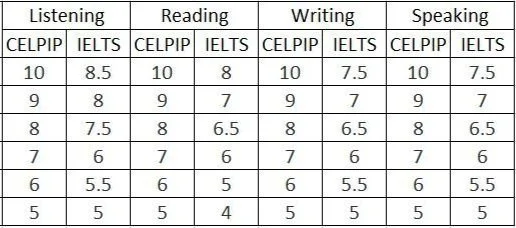IELTS vs CELPIP (What's the Difference?)
MOSAIC Engage provides both the IELTS and CELPIP tests, as well as preparation classes for both tests. But what is the difference between these two popular tests? Let’s break down the similarities and differences.
Did you know MOSAIC Engage offers CELPIP Prep classes? Click here to learn more!
IELTS and CELPIP are both tests designed to assess the English language skill of non-native speakers. The tests can be used for different purposes and have different structures. Let’s take a closer look at them both.
What is IELTS?
IELTS is a standardized test of English language skills for non-native English speakers and is managed by the British Council, IDP and Cambridge English. IELTS is probably the most widely recognized English language assessment in the world and has gained familiarity with non-native English speakers around the world as a standard of assessment.
The test has two modules: Academic, used mainly for university applications, and General Training, used mainly for immigration purposes.
Global Recognition:
IELTS is accepted by most Australian, British, Canadian, European, Irish and New Zealand academic institutions, by over 3,000 academic institutions in the United States, and by various professional organizations across the world.
Content:
The test covers a broad range of English contexts and accents, with a variety of topics and task types. You may hear British, Irish, Scottish, Australian, Canadian, and American accents on the listening section. Spelling will be the British version
Computer-delivered or Paper-based
The test can be taken in-person either on a computer or on paper. This is up to your personal preference, as some people prefer reading and writing on paper, while others prefer a screen. The speaking section is assessed by a live examiner, involving a face-to-face conversation.
What is CELPIP?
The Canadian English Language Proficiency Index Program (CELPIP), is developed by Paragon Testing Enterprises, a subsidiary of the University of British Columbia (UBC). CELPIP has become very popular in Canada, and is officially accepted by Immigration, Refugees and Citizenship Canada (IRCC) for immigration and citizenship purposes.
There are two types of CELPIP tests. The CELPIP-General test is used for Permanent Residence applications, and evaluates English language proficiency in everyday situations, using practical, real-life scenarios. The CELPIP-General LS test, which assesses only listening and speaking skills, is accepted for Canadian citizenship applications.
Content:
Focuses on Canadian contexts and scenarios, including daily life in Canada. The accents and spelling used in the CELPIP tests will always be Canadian.
Computer-delivered
CELPIP is a test you take in-person, but it is entirely computer-based, which means that the test-taker will interact with the computer to read and listen to content, answer questions, write responses, and record speaking answers.
Canada-Specific:
This test is specifically designed for Canadian immigration and citizenship requirements, and is also used by some professional designations in Canada. However, it may not be useful for those applying to colleges and universities, especially outside Canada.
Both CELPIP and IELTS give test-takers a band score, but IELTS has a maximum band score of 9 while CELPIP has a maximum band score of 12. Take a look at the chart below to see how the two tests equate to one another.
Which is easier?
This is a very common question, but unfortunately there is no real answer! Sorry to disappoint you. Both IELTS and CELPIP are standardized examinations, which means there has been an enormous amount of research and development gone into both tests to ensure they accurately represent your English language ability. Neither test is any easier than the other. It really comes down to your personal preference and your reasons for taking a test.



